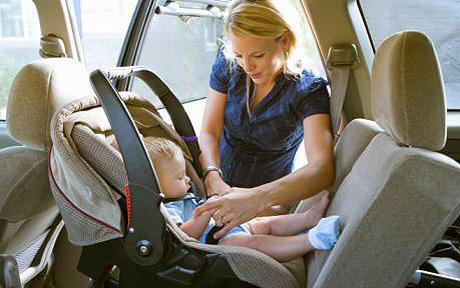
Correct car seat protects children during crashes
Child Passenger Safety Week is Sept. 15-21

Protecting a child from injury or death is the purpose for child car seats, but selecting the correct car seat for children at different stages of their lives may be daunting for parents without help.
Child Passenger Safety Week, Sept. 15-21, provides parents nationwide with opportunities to learn which kind of car seat is the best choice and where child safety seat installations can be checked.
Motor vehicle crashes are a leading cause of death for young children, according to research by the National Highway Traffic Safety Administration (NHTSA), but properly fitted child safety seats reduce the risk of death by 71 percent for infants and more than half for toddlers riding in passenger cars.
Idaho state law requires that all children 6 years of age or younger be properly restrained in an appropriate child safety restraint. An appropriate child restraint is a child safety seat designed for children up to 40 lbs. and a belt-positioning booster seat for children 6 years or younger.
Federal recommendations go much further, encouraging parents to select a car seat based on a child’s age and size, then choose a seat that fits the transport vehicle and always use it. Drivers should review and follow specific car-seat manufacturer’s instructions and read the owners manual on how to install the car seat using the seat belt or LATCH (Lower Anchors and Tethers for Children) system.
NHTSA recommends that children be kept in a properly fitted car seat for as long as possible and located in the back seat at least through age 12.
“Laws regarding child safety seats are different in each state,” explained Lisa Losness, child passenger safety coordinator for ITD's Office of Highway Safety. “But if parents follow current federal recommendations, they will always be in compliance regardless of where they travel.”
Oregon and Washington’s child- and booster-seat laws contain both age and size requirements. Fines for noncompliance in both states exceed $100. Idaho’s fine for noncompliance is $79.
NHTSA recommends that children younger than 1 should always ride in a rear-facing car seat and that parents should keep children in a rear-facing position as long as possible -- until age 3 or when the top height and or weight limit of the car seat is achieved.
By about age 4, or when rear-facing seat height or weight limits are achieved, a child may travel in a forward-facing seat with a harness. Once a child outgrows that seat at about age 7, it’s time for a booster seat that is placed in the vehicle’s back seat.
Between 8 and 12 years of age, a child should be kept in a booster seat until he or she is big enough to fit in a seat belt properly. For a seat belt to fit properly, the lap belt must lie snugly across the upper thighs, not the stomach. The shoulder belt should lie snug across the shoulder and chest, not crossing the neck or face.
“It’s still a good idea to continue locating children in the back seat, because it is the safest place for them to ride,” Losness advised.
For more information about child safety seats, visit www.itd.idaho.gov/ohs/ChildSafety/. To learn more about a child safety seat inspection opportunity, visit www.safekids.org.
Published 9-13-13